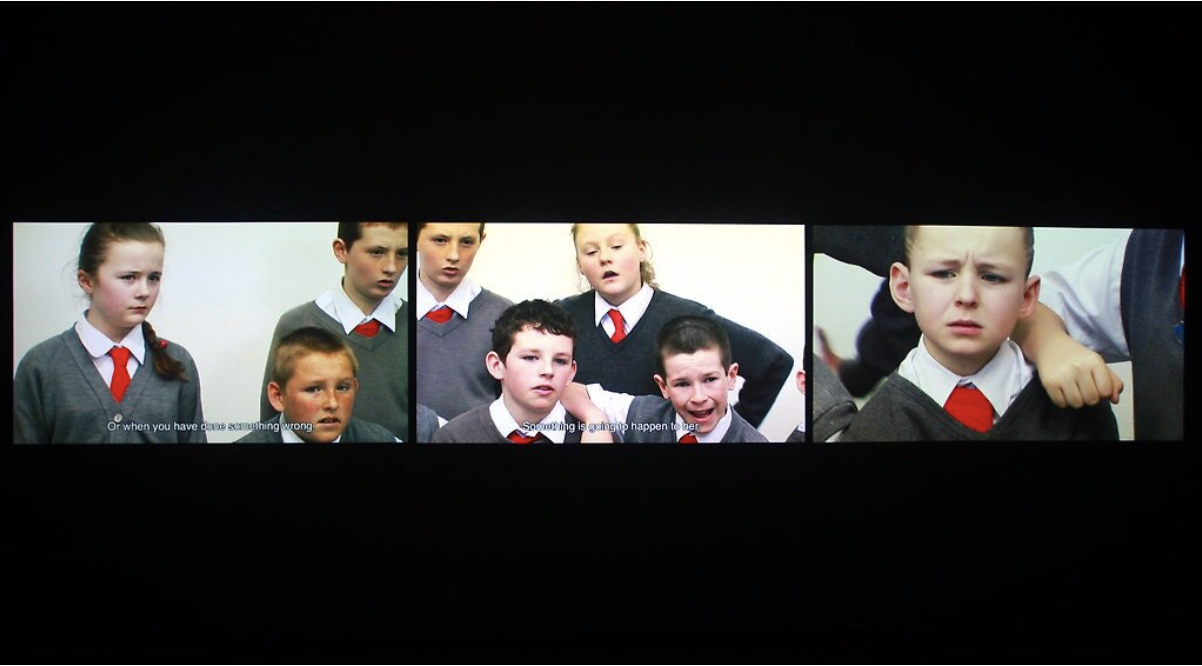Ode to Rineke Dijkstra
Originally published by Gertrude Contemporary, Melbourne, for their Missing Links: Odes to the Absent program

Rineke Dijkstra, I See A Woman Crying (Weeping Woman), 2009, 3 channel HD video, 12 minutes.Courtesy of the artist and Marian Goodman Gallery, New York, London and Paris; and Galerie Max Hetzler, Berlin
I’ve always loved other people's description of artworks, and I miss the museum experience of eavesdropping upon people's discussions of works, often preferencing that over my own knowledge and experience of the art being looked upon.
Rineke Dijkstra’s I See A Woman Crying (Weeping Woman), 2009, which I saw at the Stedelijk Museum Amsterdam in 2017, acts as the perfect stand-in for Pablo Picasso’s Weeping Woman. Dijkstra’s video examines the 1937 painting, yet Dijkstra herself preferences the audience and their interpretation, rather than including the painting within her frame. A group of schoolchildren describe and convey what they are experiencing whilst looking at the painting through the prism of their own lives. 'I think she was at a wedding and she stole the cake' remarks one. We are left with totally unguarded descriptions, often comical, absurd and tragic ideas around why the woman in the painting is in fact crying, reinforced within the peer group through the repetition and redistribution of ideas.
Dijkstra’s video installation is a microcosm of our collective and social engagement with art, the reality of the work of art defying the artist’s intent once it enters a public sphere, and to the means that we interpret through social and cultural contexts. This work is a reminder of the broader communal inclusivity of artistic engagement. It touches upon my own excitement of experiencing art and wanting so desperately to communicate those encounters with others.
Engaging with culture in isolation through these mediated forms that now feel like an extension of myself – software as prosthesis – I See A Woman Crying (Weeping Woman) exists like an umbrella through these online encounters. It reminds that our participation with art is not solely our own; it is indebted to others, individually and socially. This work makes me want to be out there looking and hearing and experiencing the stuff, along with all the others, who are doing the same.